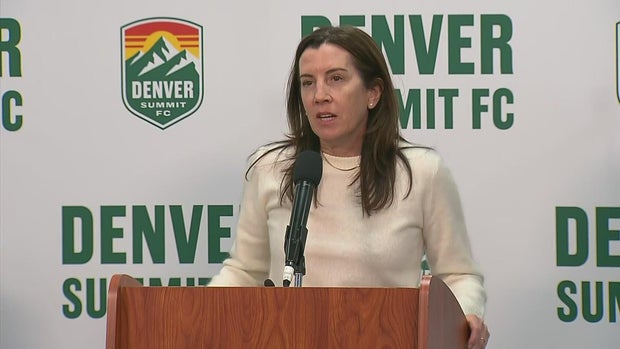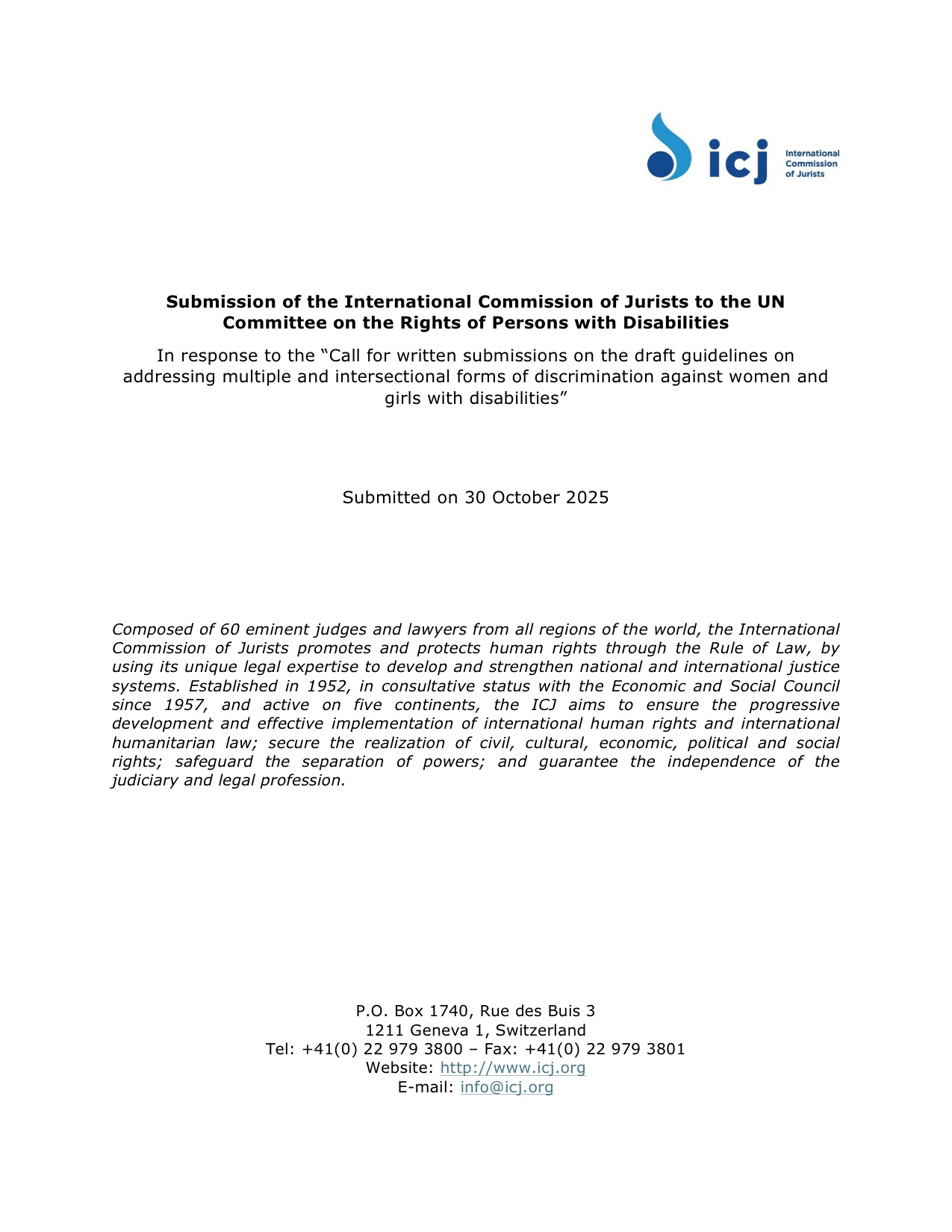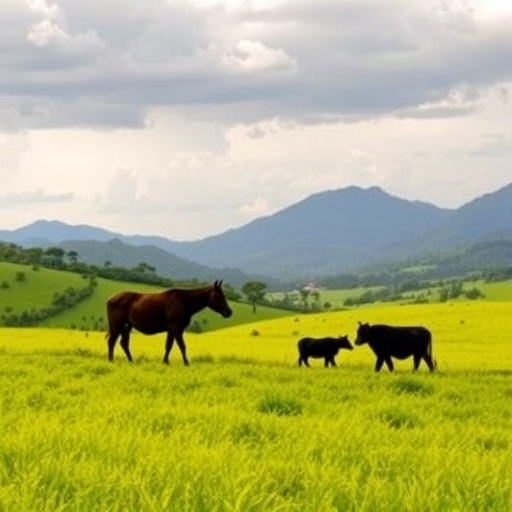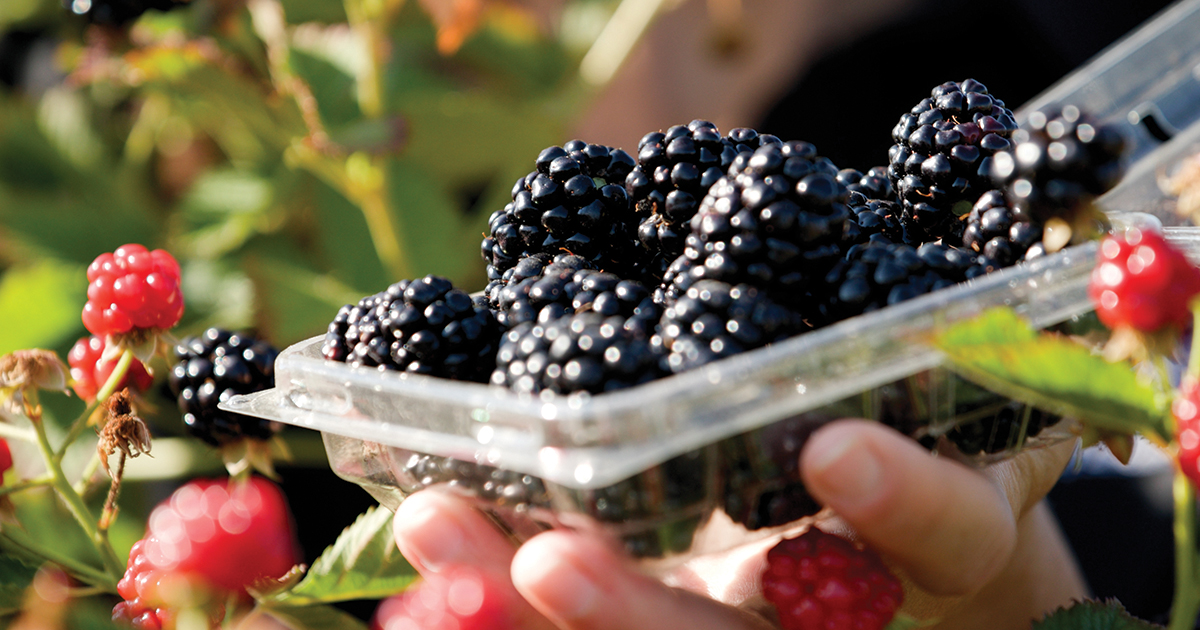NDSU Carrington Research Extension Center Field Day to offer multiple tours – Jamestown Sun

Report on the North Dakota State University Carrington Research Extension Center (CREC) 66th Annual Field Day
Event Overview and Contribution to Sustainable Development Goals (SDGs)
The North Dakota State University (NDSU) Carrington Research Extension Center (CREC) will hold its 66th annual Field Day on July 22. The event is designed to disseminate cutting-edge agricultural research to farmers, ranchers, crop advisors, and horticulturists. The day’s activities directly support several United Nations Sustainable Development Goals (SDGs), primarily focusing on SDG 2 (Zero Hunger) by promoting sustainable agriculture and improved food production, and SDG 4 (Quality Education) by providing a platform for knowledge sharing among agricultural experts and stakeholders.
Event Schedule
- 9:00 a.m. – Registration and Welcome Address
- 9:30 a.m. – Concurrent Morning Tours Commence
- 12:00 p.m. – Lunch
- 1:15 p.m. – 3:00 p.m. – Afternoon Agronomy Tour and Demonstrations
Morning Tour Sessions: Advancing Sustainable Agricultural Practices
Attendees may select one of four concurrent tours, each focused on a critical area of agriculture and its alignment with global sustainability targets.
Beef Production Tour
Key Topics and Alignment with SDGs
- SDG 2 (Zero Hunger) & SDG 12 (Responsible Consumption and Production): Sessions will address efficient feed strategies using distillers grains and canola meal, optimizing hay quality, and composting livestock mortalities, which contributes to sustainable waste management and responsible production cycles.
- SDG 15 (Life on Land): The effect of winter feeding on cropland nutrient management will be examined, directly relating to the sustainable use of terrestrial ecosystems.
Scheduled Presentations:
- Feedout project updates – Karl Hoppe, CREC
- Dried distillers grains or canola meal for feedlot cattle – Colin Tobin, CREC
- Proper growth stage to cut for quality hay – James Rogers, North Central Research Extension Center
- Using probes for testing hay – Madison Bierman, CREC
- Bred heifer valuation – Jason Fewell, Lake Region State College
- Winter feeding cattle on crop land effect on nutrient management – John Stables, NDSU
- Demonstration: Composting livestock mortalities – Mary Keena, CREC
Agronomy Tour
Key Topics and Alignment with SDGs
- SDG 2 (Zero Hunger): Discussions on crop disease management, hard red spring wheat (HRSW) varieties, and canola production practices are vital for ensuring stable and resilient food production systems.
- SDG 13 (Climate Action): The session on carbon markets provides critical information for farmers on participating in climate change mitigation efforts.
Scheduled Presentations:
- Corn disease management – Andrew Friskop, NDSU Extension
- Carbon markets – David Ripplinger, NDSU Extension
- HRSW varieties – Andrew Green, NDSU
- Hybrid HRSW – Martin Hochhalter, AgriPro Hybrid Wheat
- North Dakota soybean diseases – Wade Webster & Michael Wunsch, NDSU Extension/CREC
- Canola production practices and diseases – Venkata Chapara & Anitha Chirumamilla, Langdon Research Extension Center
Organic and Sustainable Agriculture Tour
Key Topics and Alignment with SDGs
- SDG 2 (Zero Hunger) & SDG 15 (Life on Land): This tour is fundamentally aligned with sustainable agriculture. Topics include enhancing soil health, using manure and compost, and regenerative agriculture incentive programs, all of which support the long-term health and productivity of land resources.
- SDG 9 (Industry, Innovation, and Infrastructure): A demonstration of precision agriculture technologies for organic farming highlights innovation in sustainable production.
- SDG 8 (Decent Work and Economic Growth): The session on farm risk management addresses strategies to ensure the economic viability of organic operations.
Scheduled Presentations:
- Organic research program overview – Qasim Khan, CREC
- Understanding and enhancing soil health – Carlos Pires, NDSU Extension
- Using manure and compost in organic farms – Mary Keena, CREC
- Regenerative and agricultural sustainability incentive programs – Paul DuBourt, USDA NRCS
- Farm risk management strategies – Jason Fewell, Lake Region State College
- Precision agriculture for organic farming demonstration – Ahmed Rabia, NDSU
- Organic production support network discussion
Afternoon Training Session (1:00 p.m. – 3:00 p.m.):
- Dig In: Leading Soil Health Demonstrations – Stephanie Blumhagen, FARRMS
- Organic Transition: Procedures and Soil Health – Krysti Mikkonen, NPSAS
Horticulture Tour
Key Topics and Alignment with SDGs
- SDG 2 (Zero Hunger) & SDG 11 (Sustainable Cities and Communities): This tour promotes local food security through home gardening by providing information on irrigation, vegetable variety selection, and composting. The distribution of free seeds directly supports this goal.
- SDG 15 (Life on Land): Guidance on protecting trees from the emerald ash borer contributes to preserving local biodiversity and ecosystems.
Scheduled Presentations:
- Orchard tour featuring diverse fruit species – Mike Ostlie, CREC
- Emerald ash borer protection – Joe Zeleznik, NDSU Extension
- Irrigation systems for home gardeners – Xinhua Jia, NDSU
- Selecting the best vegetable varieties – Tom Kalb, NDSU Extension
- Making compost to improve garden soil – Mary Keena, CREC
Afternoon Agronomy Tour: Innovations in Crop Management
Key Topics and Alignment with SDGs
- SDG 9 (Industry, Innovation, and Infrastructure): A spray drone demonstration will showcase how advanced technology can improve agricultural efficiency and sustainability.
- SDG 2 (Zero Hunger) & SDG 15 (Life on Land): Sessions on kochia management, biofumigation for pathogen control, and cover crop utilization focus on innovative and sustainable methods to protect crop yields and improve soil health.
Scheduled Presentations:
- Spray drone demonstration – Rupak Karn, NDSU Extension
- Kochia management in soybean – Jeff Stachler, CREC
- Brassica biofumigation for pathogen control in soybean – Sergio Cabello-Leiva, Minnesota Soybean Research and Promotion Council
- Cover crop demonstration and utilization – Ezra Aberle, CREC
Analysis of SDGs in the Article
1. Which SDGs are addressed or connected to the issues highlighted in the article?
-
SDG 2: Zero Hunger
- The article focuses on an agricultural field day aimed at improving food production. It covers topics like beef production, agronomy (crop management), and horticulture, all of which are central to achieving food security and ending hunger. The event showcases research on crop varieties (“HRSW varieties”), disease management (“North Dakota soybean diseases”), and livestock systems (“Feedout project updates”), directly contributing to sustainable agriculture and enhanced food production.
-
SDG 4: Quality Education
- The event is fundamentally an educational one, described as a “premier summer event to showcase what is new and trending in agriculture.” It provides “farmers, ranchers, crop advisors, horticulturists and others” with access to “topic experts” and practical training, such as a “soil health education workshop.” This aligns with providing inclusive and equitable quality education and promoting lifelong learning opportunities.
-
SDG 9: Industry, Innovation, and Infrastructure
- The field day highlights “cutting-edge agricultural research,” “innovations,” and technological advancements. Specific examples include the “spray drone demonstration” and “precision agriculture for organic farming,” which represent upgrading the technological capabilities of the agricultural sector and enhancing scientific research.
-
SDG 12: Responsible Consumption and Production
- A significant portion of the event is dedicated to sustainable practices. The “Organic and Sustainable Agriculture Tour” and topics like “composting livestock mortalities,” “nutrient management,” “soil health,” and “regenerative and agricultural sustainability incentive programs” directly address the goal of ensuring sustainable production patterns.
-
SDG 13: Climate Action
- The article mentions a session on “carbon markets,” which is a mechanism for climate change mitigation. By educating farmers on this topic, the event contributes to building knowledge and capacity to meet climate change challenges within the agricultural sector.
-
SDG 15: Life on Land
- The focus on improving and sustaining “soil health,” using “cover crops,” and managing land through “winter feeding cattle on crop land effect on nutrient management” relates to protecting and restoring terrestrial ecosystems. Additionally, the session on protecting trees from the “Emerald ash borer” contributes to halting biodiversity loss by preserving local tree populations.
2. What specific targets under those SDGs can be identified based on the article’s content?
-
Target 2.4: By 2030, ensure sustainable food production systems and implement resilient agricultural practices that increase productivity and production, that help maintain ecosystems, that strengthen capacity for adaptation to climate change, extreme weather, drought, flooding and other disasters and that progressively improve land and soil quality.
- This target is addressed through the “Organic and Sustainable Agriculture Tour,” which features discussions on “soil health,” “cover crops,” “composting,” “regenerative and agricultural sustainability,” and “biofumigation for pathogen control.” These are all resilient and sustainable agricultural practices.
-
Target 4.4: By 2030, substantially increase the number of youth and adults who have relevant skills, including technical and vocational skills, for employment, decent jobs and entrepreneurship.
- The field day is designed to provide relevant, technical skills to agricultural professionals. Topics like “kochia management in soybean,” “canola production practices,” “using probes for testing hay,” and learning to operate “spray drones” equip attendees with practical skills to improve their operations and livelihoods.
-
Target 9.5: Enhance scientific research, upgrade the technological capabilities of industrial sectors in all countries, in particular developing countries, including, by 2030, encouraging innovation and substantially increasing the number of research and development workers per 1 million people and public and private research and development spending.
- The event, hosted by the Carrington Research Extension Center, is a direct platform for disseminating “cutting-edge agricultural research.” It showcases “innovations” and emerging technologies like “precision agriculture for organic farming” and “spray drones,” thereby promoting the upgrade of technological capabilities in the agricultural industry.
-
Target 12.2: By 2030, achieve the sustainable management and efficient use of natural resources.
- The article details sessions on the efficient use of resources, such as “winter feeding cattle on crop land effect on nutrient management,” “using manure and compost in organic farms,” and “irrigation systems for home gardeners.” The demonstration on “composting livestock mortalities” is a clear example of sustainable waste and resource management.
-
Target 15.3: By 2030, combat desertification, restore degraded land and soil, including land affected by desertification, drought and floods, and strive to achieve a land degradation-neutral world.
- The emphasis on soil health is prominent. The tour includes sessions on “understanding and enhancing soil health,” how to “assess it using key indicators,” and “practical ways to improve and sustain it.” The use of a “mobile soil health unit” for demonstrations and discussions on “cover crops” directly supports the goal of restoring land and soil quality.
3. Are there any indicators mentioned or implied in the article that can be used to measure progress towards the identified targets?
-
Indicator for Target 2.4 (Proportion of agricultural area under productive and sustainable agriculture)
- The article implies this can be measured by the adoption of practices discussed at the event. Specific practices mentioned that serve as indicators include the use of “cover crops,” “composting,” “biofumigation,” and participation in “regenerative and agricultural sustainability incentive programs.”
-
Indicator for Target 4.4 (Proportion of youth and adults with information and communications technology (ICT) skills)
- The demonstration and training on “spray drones” and “precision agriculture for organic farming” directly relate to developing modern ICT skills in agriculture. The number of attendees participating in these specific sessions could be a measure of progress.
-
Indicator for Target 9.5 (Research and development expenditure as a proportion of GDP)
- While not providing national data, the article points to indicators at a local level. The existence of the Carrington Research Extension Center (CREC) and the presentation of numerous research projects (e.g., on “HRSW varieties,” “feedout projects,” “organic research initiatives”) serve as a proxy for investment in agricultural R&D. The number of research topics presented is an indicator of research activity.
-
Indicator for Target 15.3 (Proportion of land that is degraded over total land area)
- The article explicitly mentions the use of “key indicators” to assess soil health. The presence of a “mobile soil health unit” for demonstrations shows a direct method of measurement. Therefore, metrics related to soil health (e.g., organic matter content, nutrient levels, water retention), which are assessed by these tools, are direct indicators.
SDGs, Targets, and Indicators Summary
| SDGs | Targets | Indicators |
|---|---|---|
| SDG 2: Zero Hunger | Target 2.4: Ensure sustainable food production systems and implement resilient agricultural practices. | Adoption of sustainable practices such as using cover crops, composting, organic farming methods, and biofumigation as discussed in the tours. |
| SDG 4: Quality Education | Target 4.4: Increase the number of youth and adults who have relevant skills. | Number of attendees at the field day; Participation in specific training sessions like the “soil health education workshop” and demonstrations on “spray drones.” |
| SDG 9: Industry, Innovation, and Infrastructure | Target 9.5: Enhance scientific research and upgrade technological capabilities. | Number of research projects presented; Demonstration and adoption of new technologies like “precision agriculture” and “spray drones.” |
| SDG 12: Responsible Consumption and Production | Target 12.2: Achieve the sustainable management and efficient use of natural resources. | Implementation of practices like “composting livestock mortalities,” efficient “nutrient management,” and use of sustainable irrigation systems. |
| SDG 13: Climate Action | Target 13.3: Improve education and awareness on climate change mitigation. | Number of farmers educated on and potentially participating in “carbon markets.” |
| SDG 15: Life on Land | Target 15.3: Combat desertification and restore degraded land and soil. | Use of “key indicators” from the “mobile soil health unit” to assess and improve soil quality; Adoption rate of cover cropping. |
Source: jamestownsun.com

What is Your Reaction?
 Like
0
Like
0
 Dislike
0
Dislike
0
 Love
0
Love
0
 Funny
0
Funny
0
 Angry
0
Angry
0
 Sad
0
Sad
0
 Wow
0
Wow
0


















-1920w.png?#)






















;Resize=805#)


































